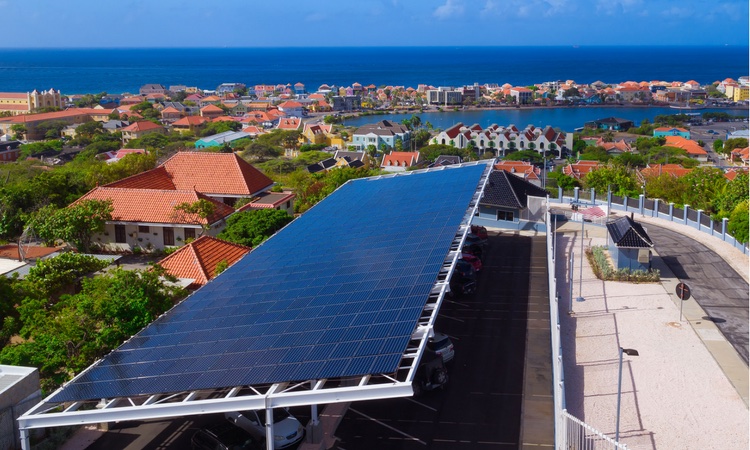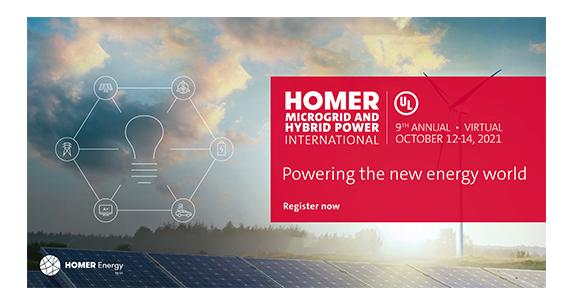The use of distributed energy resources (DERs) in the overall power supply mix is expanding. But developing and connecting DERs to the grid comes with numerous challenges. One challenge is the need to navigate complex relationships with utility companies. Success requires evaluating factors that impact financial viability and efficiency, such as data quality and energy auditing, technical bottlenecks, regulatory mandates, pricing incentives and political perspectives on renewable energy.
Microgrid News talked with Michael Ginsberg of Bowman Consulting to explore some of the challenges and lessons learned from connecting a DER-powered U.S. government facility to the grid on the Caribbean island of Curaçao. Ginsberg will present at HOMER Energy by UL’s 9th Annual HOMER Microgrid and Hybrid Power International, Oct. 12-14, 2021, during the Island Power: Renewables for Diesel-Powered Utilities session.
No matter what country you are in, the process of designing, building and commissioning distributed energy systems is complex. Development requires access to accurate technical data and an understanding of the capabilities and incentives of multiple stakeholders, as well as managing local regulatory and political factors that can make or break hybrid energy developments.
When Michael Ginsberg was brought in as an engineering consultant to evaluate the feasibility of a high-profile U.S. government solar installation in Curaçao, he was surprised to discover the utility bills used to estimate building loads and create a preliminary design were incorrect.

“The addition of renewable energy to this building was supposed to create a net-zero facility,” Ginsberg said, “but the numbers just didn’t add up.” Somehow the local utility had been reading the wrong meter and substantially undercharged its customer in the past. That meant the building would need far more energy than the sizing of the new solar system would produce, Ginsberg said. A truly net-zero result was out of the question at that point.
The project was a carport with a 128 kilowatt (kW) solar array. The original intent was to reduce energy consumption by 75% by installing a new high-efficiency HVAC system and serve the remaining 25% of load with the new solar system. But the revelations about the actual electrical load introduced further financial and technical questions.
Curaçao is now attempting to slow solar energy adoption
The island of Curaçao — home to approximately 150,000 — is a popular Caribbean tourist destination and a semi-autonomous region within the Kingdom of the Netherlands. A close neighbor to Venezuela, Curaçao has its local oil refinery that endears politicians to the oil industry and supports many residents with oil industry jobs.
Nonetheless, like many Caribbean islands, Curaçao depends heavily on imported fossil fuels and pays a stiff penalty in the form of high electricity rates and gas prices for transportation. The average commercial and residential electricity rates in Curaçao are $0.35 per kilowatt hour (kWh), according to the U.S. Department of Energy, far higher than the average $0.12 per kWh Americans pay.
Due to the high energy costs, renewable energy, microgrids and diversification of generation resources are the logical choices to supply power to many Caribbean islands. The island of Curaçao had wholeheartedly embraced the development of renewable energy for many years. Support for renewable energy dates back to the 1970s when it was the first island to construct wind farms in the Caribbean; a generous feed-in tariff for solar energy in the early 2000s was another major policy initiative.
But the response to solar incentives was so enthusiastic that the utility eventually struggled with revenue losses and an oversupply of solar because of a generous feed-in-tariff. The market for solar had become oversaturated, and to slow the growth rate, the utility company eventually imposed hefty monthly interconnection fees on solar projects.
As a result, when Ginsberg arrived in 2017 to complete the project, the political environment for renewable energy was not as supportive as expected. Due to the challenging economic factors, the utility company’s reception for the ambitious new project was lukewarm. He said his project faced several barriers to completion and required additional time spent negotiating with the utility. He also noticed many solar companies were going out of business, which increased upfront costs for his planned solar energy system.
Finally, the problem of incorrect energy usage data in the initial planning phase had resulted in an undersized array. The original goal of the project, which was to produce a net-zero facility, could not be met.
Best practices and red flags when planning a DER interconnection
Looking back on the experience, Ginsberg developed a practical checklist of factors to evaluate before signing on to distributed energy projects worldwide. This checklist could also be informative for energy developers working across different U.S. states, many of which present diverse policy incentives and barriers to renewable energy.
- Make sure you have accurate technical data before embarking on distributed energy projects. Accurate data enables you to prove the system’s economic viability and monitor the return on investment once in operation. You need to evaluate at least two years of utility bills and conduct an energy audit to verify accuracy.
- Use software modeling programs to size systems accurately. Modeling can accurately estimate the production of a solar or solar-plus-energy storage system to determine that it meets the facility’s load. Additionally, determining the value of battery storage from arbitrage with time-of-use rates is helpful in projects that include energy storage.
- Understand how reliable the local utility’s energy delivery is. This data point, said Ginsberg, is an excellent proxy for the utility’s level of sophistication and organization in handling renewable energy interconnection. A reliable utility that provides uninterrupted power is also likely to have a robust asset management program and be prepared for variable renewable energy on the grid. The combination can foretell a smoother experience for new project developers.
- View a lack of policies supporting renewable energy as a potential red flag. In Curaçao, the feed-in tariff was generous but poorly designed and unsustainable due to the lack of investment in energy storage, distribution transformers and other infrastructure needed to support high penetrations of variable renewable energy.
- Know who manages renewable energy policy at the utility. If the utility company’s top executives manage renewable energy, its success is probably taken seriously and will get priority attention.
- Understand what the relationship is to petroleum. The area’s economic or other connections to the use of petroleum could be an important political factor both at the government and utility level.
The story in Curacao portrays the universal challenges that accompany integrating high amounts of variable renewable energy into a centralized electric grid designed for constant power supply. The conflicting priorities that swirl around renewable energy are common as utilities struggle to balance the erosion of revenues and potential increased costs of integrating renewable energy with its benefits.
Ginsberg said the Curaçao utility did not like giving up its centralized power generation business model, felt threatened by the rapid uptake of residential solar and was unprepared for the supply/demand mismatch from variable wind and solar.
Ultimately the solar array was commissioned and has reliably supplied 30% of the electricity needs of the building since 2018. Ginsberg said he understands the utility’s reluctance to pay increased costs associated with integrating variable renewable energy and pointed out that a single transformer can cost more than $75,000 (USD). For portfolios of over 30% renewable energy penetration, future planning should consider the cost of storage, faster ramping generators and forecasting — in addition to grid upgrades.
When solar and wind energy create problems due to supply/demand mismatch, developers should be ready to demonstrate their value to the grid. For instance, photovoltaic inverters can provide reactive power compensation, and batteries can support the grid during periods of peak demand. Vehicle-to-grid dispatch services can provide significant value by shaving peak-demand charges for the facility that houses the capability while enabling utility companies to improve demand response, frequency control and energy arbitrage.
These factors may impact whether utilities welcome or resist the interconnection of distributed energy resources and how smoothly the process goes.
About Michael Ginsberg
Michael Ginsberg is vice president of energy transition at Bowman Consulting, a multi-discipline engineering firm. He is a solar energy specialist, buildings systems consultant and author with over a decade of experience performing technical analyses of renewable energy and building systems at U.S. Embassies in West Africa, South America, the Middle East and Europe. He is a lecturer in Engineering Management at Brunel University, trainer for Urban Green Council on the 2020 NYC Energy Code and consultant for Steven Winter Associates on commissioning and building electrification. Ginsberg is a Doctor of Engineering Science candidate at Columbia University, specializing in solar energy integration into the grid.
He is also a LEED AP O+M, CEM, NABCEP PV Installation Professional, and holds a master’s degree in sustainability management from Columbia University.
Learn more
Readers are invited to register for HOMER Energy by UL’s 9th Annual HOMER Microgrid and Hybrid Power International, which will be virtual this year. Michael Ginsberg will present Navigating uncharted waters: Grid interconnections in Curacao during the session dedicated to Island Power: Renewables for Diesel-Powered Utilities on Oct. 14, 2021, 8-10 a.m. MDT. This year’s conference, Powering the New Energy World, includes six separate online sessions over three days. Registration is complimentary.

